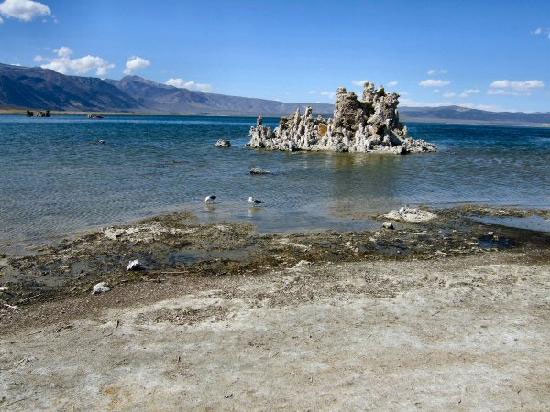Science rejects the bacteria eating arsenic
Science has published two new reports with the complete argument contrary to the study that arsenic-eating bacteria exist on the earth.
In a concussion finding published in the prestigious Science magazine in 2010, strange bacteria in Lake Mono, eastern California (USA), are believed to live on an unbelievable 'food' form. credit.

Lake Mono, where bacteria remain controversial
The report immediately resonates not only in the scientific world but also makes people very impressed, with many believing that there are still different lives in the world, let alone in distant planets.
Recently, it is also the Science science journal that has published a complete rejection of the study. Accordingly, the evidence is clear that bacteria cannot absorb arsenic to survive.
In response to the first study with the team leader, Felisa Wolfe-Simon of NASA's Institute of Physical Biology, another group, led by Rosemary Redfield of the University of British Columbia (Canada), affirmed arsenic in the lake. Mono does not contribute to bacterial growth.
Another report, conducted by Swiss experts, shows that the bacterium has strong resistance to the toxic effects of arsenic, but they still depend on phosphorus to grow, like all births. other things.
Experts concluded that in the initial experiment, the NASA team did not note that traces of phosphorus infection could have helped the bacteria grow.
Accordingly, bacteria at Lake Mono did not break the long-standing rule of life, contrary to the report of expert Wolfe-Simon.
- Bacteria can live in arsenic environment
- Origin of arsenic poison in groundwater in Vietnam and neighboring countries
- Detecting microorganisms that live on ... 'arsenic' in the Pacific Ocean
- India develops arsenic detection techniques
- Simple solution to treat arsenic contaminated soil
- Risk of death when combining shrimp with vitamin C
- Hanoi underground water 'arsenic contamination' to foreign newspapers
- How much arsenic in water is dangerous?
- Finding ferns that can live in arsenic-polluted environments
- The most dangerous toxins to humans
- Drinking dangerous arsenic water like smoking
- Bacteria protect ancient paintings from bacteria that eat pigments
 Is the magnetic North Pole shift dangerous to humanity?
Is the magnetic North Pole shift dangerous to humanity? Washington legalizes the recycling of human bodies into fertilizer
Washington legalizes the recycling of human bodies into fertilizer Lightning stone - the mysterious guest
Lightning stone - the mysterious guest Stunned by the mysterious sunset, strange appearance
Stunned by the mysterious sunset, strange appearance